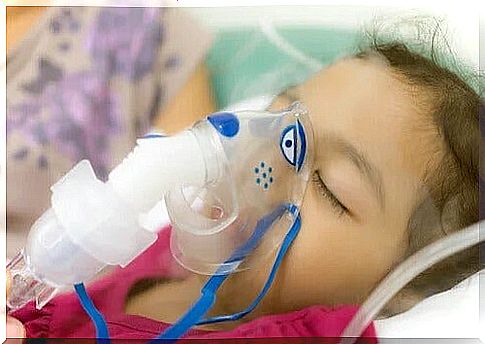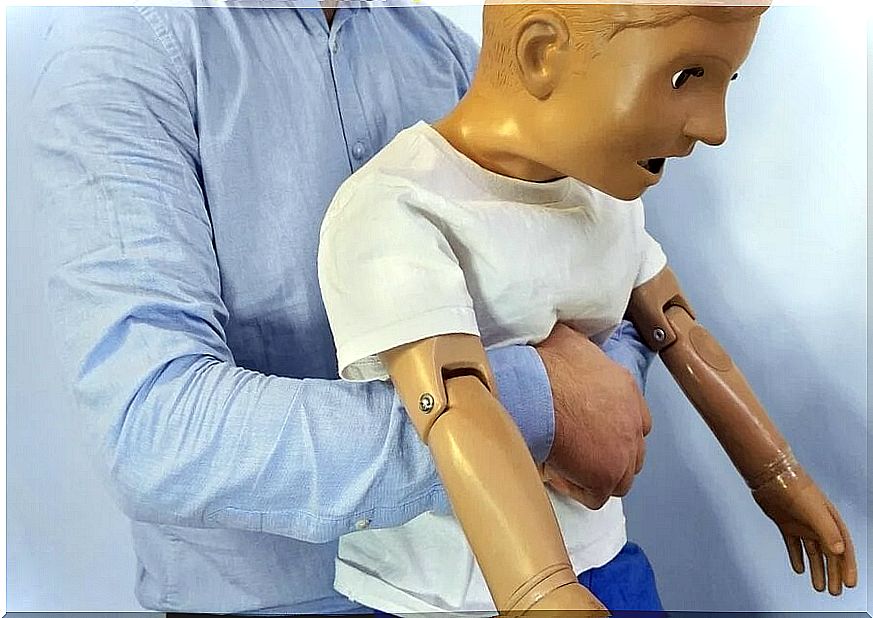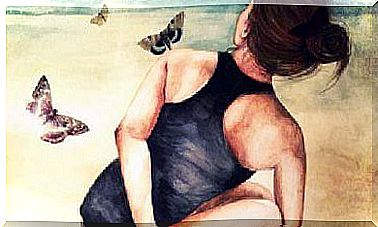Choking In Children: What To Do And How To Prevent It?

According to available data, it is estimated that choking and consequent asphyxia in children is one of the most common accidents and the third leading cause of unnatural death, both in childhood and old age. Therefore, it is necessary to act on two fronts: prevention and approach.
Prevention is the best alternative when it comes to choking in children. As it is a situation that can lead to death, it is better to eliminate the risks, especially after four months of age, when this becomes a latent danger.
If, despite all precautions, a choking episode still occurs, it is important to know what to do to prevent the consequences from being serious. There are simple first aid measures that can save a child’s life and therefore we should know.
choking on children
Choking in children is an obstruction of the airway by a foreign body. At worst, the airways are completely blocked, preventing air from reaching the lungs and causing death.
Most of these cases of obstruction occur in children under 3 years of age. The peak of cases appears in children between 6 and 12 months. Almost always the foreign object causing the choking is a food, which often corresponds to an oilseed or a bullet.
Other dangerous foods include meats and sausages, as well as bones and bones. Due to their texture and shape, sausages also have many scratches. In general, any solid object that fits in the child’s mouth is also dangerous.

Prevention measures against choking in children
Choking in children has an unpredictable outcome and is therefore best avoided. The first thing to keep in mind is that the vast majority of cases occur at mealtimes or when children are playing. Therefore, it is essential to supervise the little ones in these activities.
Other preventive measures are as follows:
- Pay attention during complementary feeding and avoid some foods : oilseeds and fruits that have stones, such as cherries or plums, should not be made available to children before 5 years of age or until we are sure they know how to eat them.
- Small Objects and Toys: Small solid objects such as batteries or marbles should not be left within reach of children. Special care must be taken with balloons and similar toys as, due to their material, they easily attach and obstruct the airway.
- Rules during the meal: children must eat at the table and not lying down. Nor should they eat while running and playing. It is necessary to teach them to chew correctly.
- Avoid necklaces: children should never wear necklaces, much less if they are made of beads or small pieces.
What to do if a child chokes?

If, despite preventive measures, a child chokes, the first thing to do is to remain calm. This allows for a quick assessment of the situation to know what to do. When a child is choking, the first thing he or she can do is cough, talk or cry.
If the child coughs, it is best to leave him and encourage him to continue. Sometimes improper intervention causes the foreign object to move and this makes it more difficult to remove. Avoid hitting her back, pressing her abdomen, or giving her something to drink. When the cough is ineffective, it is most appropriate to call the emergency services and, while they arrive, do the following:
- Lift the child up and make him nod his head.
- Place one arm under the child’s armpit and support the chest with one hand.
- With the other hand, tap the child’s upper back between the shoulder blades. You should use the bottom of the palm of your hand and should not take more than five strokes.
The Heimlich maneuver
In case the child is not able to expel the object that is suffocating him, the Heimlich maneuver must be performed up to five times in a row. It can be done as follows:
- You should stand behind the child and put your arms around the child ‘s waist.
- Make a fist with one hand, placing the thumb joint above the navel at the level of the pit of the stomach.
- With the other hand, you should cover the wrist and apply strong pressure inward and upward.
- If the child is unconscious, it is appropriate to give 30 chest presses, followed by two breaths into the child’s mouth, keeping the nose covered. This must be done until help arrives.








